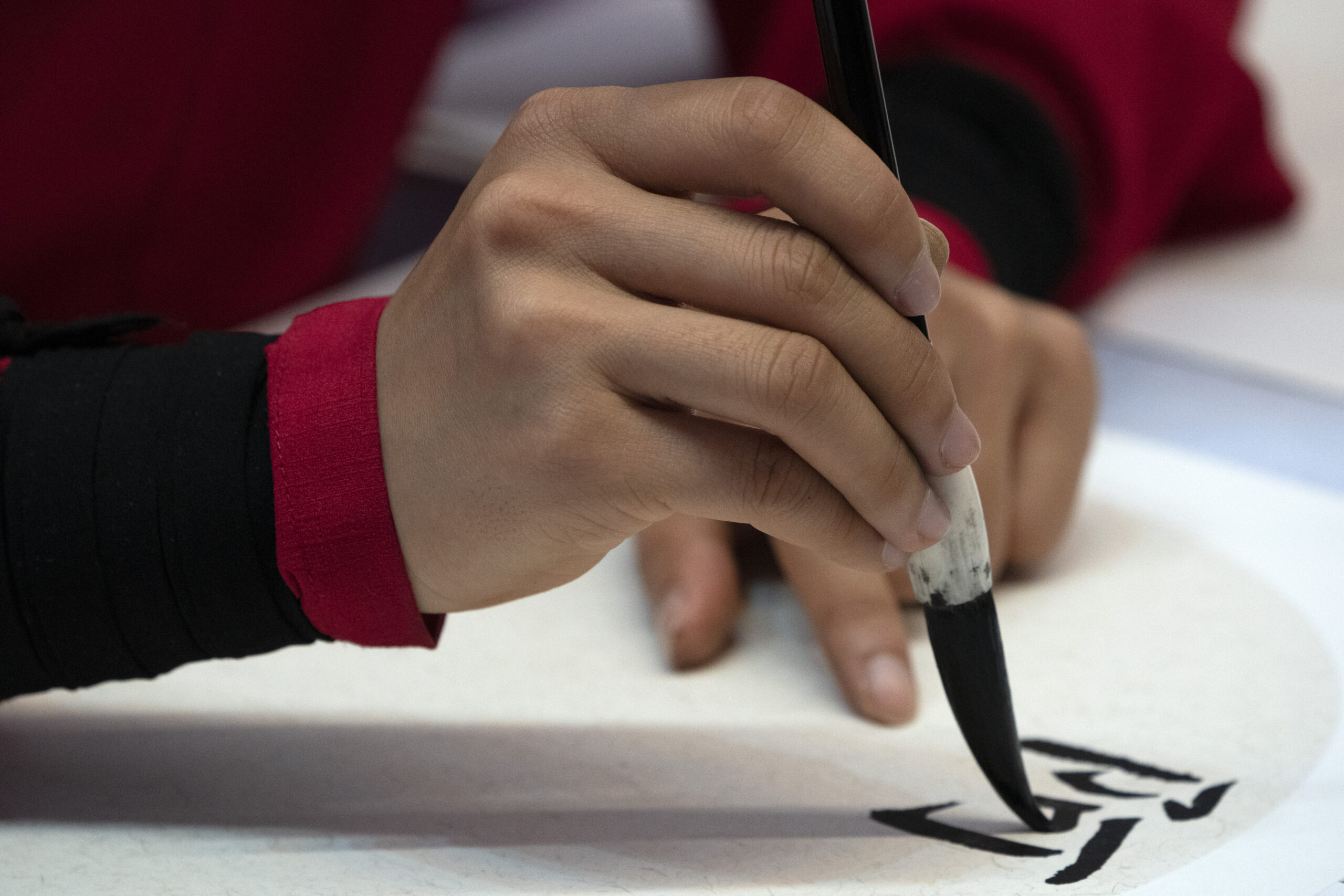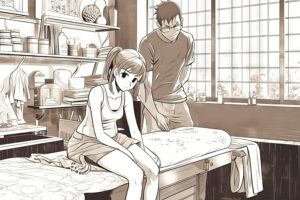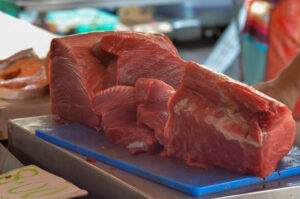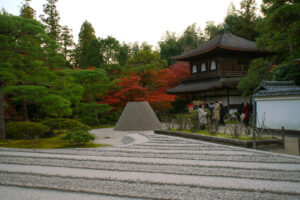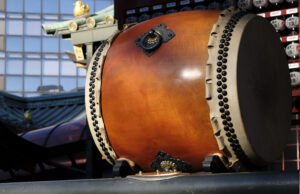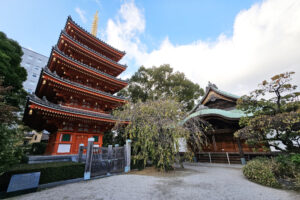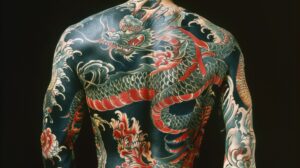In the heart of Japanese culture, where tradition intertwines with the aesthetic sensibilities of the society, lies Shodo, the art of calligraphy. This ancient practice, which dates back to the 5th century, is not merely about writing kanji or Japanese characters; it is an embodiment of the artistic spirit and philosophical depth of Japan. Mastering Shodo is a journey through history, art, and self-discovery. This article unveils the intricate world of Shodo, exploring its tools, techniques, and the profound cultural significance that makes it much more than just an art form.
1. Diving Into Shodo: Japan’s Calligraphy Heritage
Shodo, or "the way of writing," is an art form that has captivated the hearts of many, both within Japan and internationally. This practice originated from Chinese calligraphy, which was introduced to Japan in the 5th century. Over the centuries, it evolved into a distinct style that reflects the Japanese aesthetic and philosophical mindset. The mastery of Shodo is not only valued for its visual beauty but also for its ability to convey the calligrapher’s spiritual depth. Historically, Shodo was considered a requisite skill for the educated elite, intertwining closely with the practices of Zen Buddhism and the samurai code of conduct. Today, it remains a vibrant part of Japanese culture, symbolizing the country’s rich heritage and enduring traditions.
2. The Basic Tools of Shodo: More Than Just a Brush
Shodo is an art form that relies on simplicity and precision, and its practice requires a few fundamental tools, each playing a crucial role in the creation process. The primary tool is the brush (fude), which varies in size and bristle type, allowing for a wide range of strokes. The paper (washi), made from mulberry bark, provides an ideal surface that captures the ink’s texture and flow. The ink (sumi) itself is a solid stick made from soot and animal glue, ground against an inkstone (suzuri) with water to produce a rich, velvety black liquid. The paperweight (bunchin) secures the paper in place, ensuring stability as the artist works. Each element, from the brush to the ink, embodies the essence of Shodo, demanding precision, care, and mindfulness from the practitioner.
3. Understanding Kanji, Hiragana, and Katakana in Shodo
In Shodo, the characters used are not merely letters but are considered artistic expressions. There are three types of characters: kanji, which are logographic characters borrowed from Chinese; hiragana, a syllabary that is uniquely Japanese; and katakana, another syllabary mainly used for foreign words. Each character type has its own stylistic nuances and is used for different purposes, adding layers of meaning and beauty to the written work. Mastering the art of Shodo involves understanding the intricate balance and harmony among these characters, allowing the calligrapher to convey deep emotions and thoughts through their brushwork.
4. The Zen of Shodo: A Practice Beyond Writing
Shodo transcends mere calligraphy, encapsulating a meditative practice that engages the mind, body, and spirit. It is deeply connected to Zen Buddhism, emphasizing mindfulness, concentration, and the pursuit of simplicity. The act of preparing the ink, holding the brush, and touching it to paper becomes a form of meditation, where each stroke reflects the calligrapher’s inner state. This Zen aspect of Shodo teaches practitioners to let go of extraneous thoughts and focus on the present moment, making the art form a path to self-discovery and inner peace.
5. Mastering the Stroke: The Foundation of Shodo
The essence of Shodo lies in the stroke, with each brush movement holding significance. The beauty of a character is judged not only by its shape but also by the energy (ki) it conveys. This energy is manifested through the pressure, speed, and angle of the brush, requiring years of practice to master. The stroke must be executed with confidence and grace; there is no room for hesitation, as each mark is permanent and cannot be corrected. Mastery of Shodo is achieved when the calligrapher’s strokes become an extension of their spirit, capturing the vitality and fluidity of life itself.
6. The Art of Ink: Preparing Sumi for Shodo
Preparing the ink for Shodo is an art in itself, indicative of the practitioner’s dedication and mindfulness. The process involves grinding the sumi ink stick against the inkstone with water, gradually creating the ink. This act is not merely preparatory; it is considered an integral part of the Shodo practice, allowing the artist to calm their mind and focus their energy. The quality of the ink can greatly affect the final work, with variations in texture, shade, and fluidity offering a wide range of expression. This meticulous preparation underscores the holistic approach of Shodo, where process and product are inextricably linked.
7. Traditional vs. Modern Shodo: An Evolving Art Form
Shodo has a long and storied history, but it is far from a static art form. Traditional Shodo emphasizes strict adherence to established styles and forms, with the goal of achieving perfection in each stroke. In contrast, modern Shodo practitioners experiment with new materials, techniques, and styles, pushing the boundaries of the art. This evolution reflects the dynamic nature of Japanese culture, which honors its past while constantly innovating. Despite these changes, the spirit of Shodo remains unchanged, rooted in the pursuit of beauty, simplicity, and self-expression.
8. The Role of Shodo in Japanese Education Today
In Japan, Shodo is more than an art form; it is an integral part of the educational curriculum, teaching students discipline, concentration, and aesthetic appreciation. From elementary school, children learn the basics of Shodo, gaining an understanding of their cultural heritage and the importance of meticulous effort. This educational approach not only preserves the art of calligraphy but also instills values such as patience and attention to detail, which are esteemed in Japanese society. Through Shodo, students connect with a centuries-old tradition, fostering a sense of identity and continuity.
9. Shodo Competitions: Where Masters Are Made
Shodo competitions are a testament to the art’s vibrancy and the high level of skill it demands. These events, ranging from local school contests to prestigious national championships, offer calligraphers the opportunity to showcase their talent and dedication. Competitors are judged on the beauty, precision, and emotional depth of their work, reflecting the comprehensive nature of Shodo mastery. These competitions not only highlight the technical prowess of the artists but also the continuing relevance and appeal of Shodo in contemporary society.
10. Preserving Shodo: Efforts to Keep the Art Alive
Amidst rapid modernization and technological advancement, preserving the traditional art of Shodo poses challenges. However, efforts by cultural institutions, schools, and dedicated practitioners are ensuring its survival and relevance. Workshops, exhibitions, and the inclusion of Shodo in educational programs help to engage younger generations and the global community. Moreover, the digital age has offered new platforms for learning and sharing Shodo, making the art accessible to a wider audience. These initiatives underscore the collective commitment to keeping the spirit of Shodo alive for future generations.
11. From Brush to Heart: Personal Journeys in Shodo
For many, Shodo is a personal journey that mirrors life’s ups and downs. Practitioners speak of the deep fulfillment they find in the rhythmic motion of the brush and the concentration required, which brings them closer to their inner selves. Each piece of calligraphy tells a story, not just of the characters written but of the artist’s journey, struggles, and triumphs. The path to mastering Shodo is arduous, filled with frustration and moments of enlightenment. Yet, it is this journey that enriches the practitioner’s life, offering lessons in patience, resilience, and the pursuit of beauty.
12. Learning Shodo: Resources and Schools for Beginners
For those interested in embarking on the journey of Shodo, numerous resources and schools offer instruction from the basics to advanced techniques. Many cultural centers worldwide provide classes led by experienced calligraphers, while online tutorials and courses make learning accessible from anywhere. These resources not only teach the technical aspects of Shodo but also impart an understanding of its cultural background and philosophical foundation. Beginners are encouraged to approach Shodo with an open mind and heart, ready to explore the depth and beauty of this exquisite art form.
Mastering Shodo is a profound journey that transcends the act of writing, offering insights into the culture, philosophy, and aesthetic principles of Japan. This art form, with its rich history and evolving practice, continues to captivate and inspire, bridging the past with the present. Through the dedication of practitioners and the enduring appeal of its Zen-like focus, Shodo remains a vibrant and essential component of Japanese heritage. As we unveil the intricacies of Shodo, we discover not just the beauty of its calligraphy but the enduring spirit of a culture devoted to the pursuit of perfection, simplicity, and profound artistic expression.
